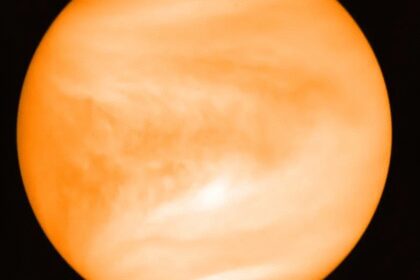Astronomers Unveil Giant Tides of Plasma Beneath the Sun
An international team of solar physicists, led by the Indian Institute of Astrophysics (IIA), has uncovered fascinating patterns of plasma currents beneath the Sun’s surface. Their findings, published in the Astrophysical Journal Letters, suggest these currents shift with the Sun’s magnetic heartbeat and could significantly impact space weather and Earth.
The near-surface shear layer (NSSL), extending to about 35,000 km in depth, is a critical region beneath the Sun’s surface. It features distinct rotational behaviors that vary with depth and changes over space and time, related to active region magnetic fields and the solar cycle. Astronomers have probed the dynamic inner weather of the Sun, observing plasma currents just beneath its surface that pulse in step with its 11-year sunspot cycle.
Researchers from Stanford University (USA) and the National Solar Observatory (NSO, USA) have also traced how these hidden flows shift over time, potentially reshaping our understanding of solar dynamics. Employing helioseismology, an advanced technique that tracks sound waves as they travel through the Sun, the team observed changes in the movement of solar material using data from NASA’s Solar Dynamics Observatory/Helioseismic and Magnetic Imager (SDO/HMI) and the ground-based Global Oscillations Network Group (GONG) of NSO.
Fascinating Patterns
The analysis led by Professor S.P. Rajaguru and PhD student Anisha Sen from IIA revealed fascinating patterns: surface plasma flows converge toward active sunspot latitudes but reverse direction midway through the NSSL, flowing outward to form circulation cells. These flows are strongly influenced by the Sun’s rotation and the Coriolis force, the same force responsible for the spin of hurricanes on Earth.
To validate their findings, the team zoomed in on a massive sunspot region using 3D velocity maps. The localised flow patterns they observed matched the global trends, confirming both surface inflows and deeper outflows. These findings give us a better understanding of how the Sun’s magnetic activity is linked to its internal flows and hint that we might still be missing something lurking in deeper layers that truly drives its global dynamics.
Reference : https://www.thehindu.com/sci-tech/science/iia-researchers-chart-the-suns-subsurface-weather/article69522295.ece








